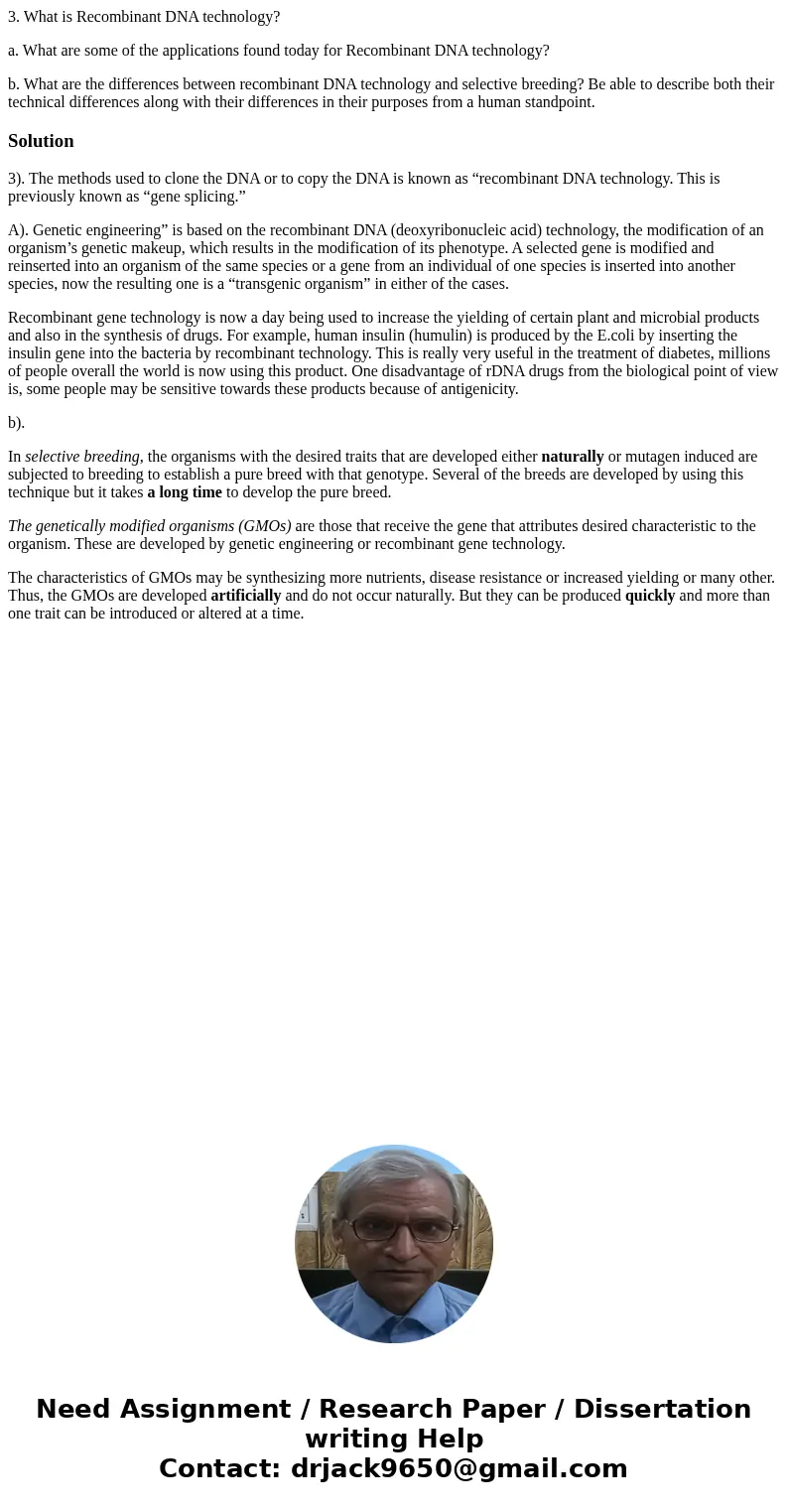3 What is Recombinant DNA technology a What are some of the
3. What is Recombinant DNA technology?
a. What are some of the applications found today for Recombinant DNA technology?
b. What are the differences between recombinant DNA technology and selective breeding? Be able to describe both their technical differences along with their differences in their purposes from a human standpoint.
Solution
3). The methods used to clone the DNA or to copy the DNA is known as “recombinant DNA technology. This is previously known as “gene splicing.”
A). Genetic engineering” is based on the recombinant DNA (deoxyribonucleic acid) technology, the modification of an organism’s genetic makeup, which results in the modification of its phenotype. A selected gene is modified and reinserted into an organism of the same species or a gene from an individual of one species is inserted into another species, now the resulting one is a “transgenic organism” in either of the cases.
Recombinant gene technology is now a day being used to increase the yielding of certain plant and microbial products and also in the synthesis of drugs. For example, human insulin (humulin) is produced by the E.coli by inserting the insulin gene into the bacteria by recombinant technology. This is really very useful in the treatment of diabetes, millions of people overall the world is now using this product. One disadvantage of rDNA drugs from the biological point of view is, some people may be sensitive towards these products because of antigenicity.
b).
In selective breeding, the organisms with the desired traits that are developed either naturally or mutagen induced are subjected to breeding to establish a pure breed with that genotype. Several of the breeds are developed by using this technique but it takes a long time to develop the pure breed.
The genetically modified organisms (GMOs) are those that receive the gene that attributes desired characteristic to the organism. These are developed by genetic engineering or recombinant gene technology.
The characteristics of GMOs may be synthesizing more nutrients, disease resistance or increased yielding or many other. Thus, the GMOs are developed artificially and do not occur naturally. But they can be produced quickly and more than one trait can be introduced or altered at a time.

 Homework Sourse
Homework Sourse